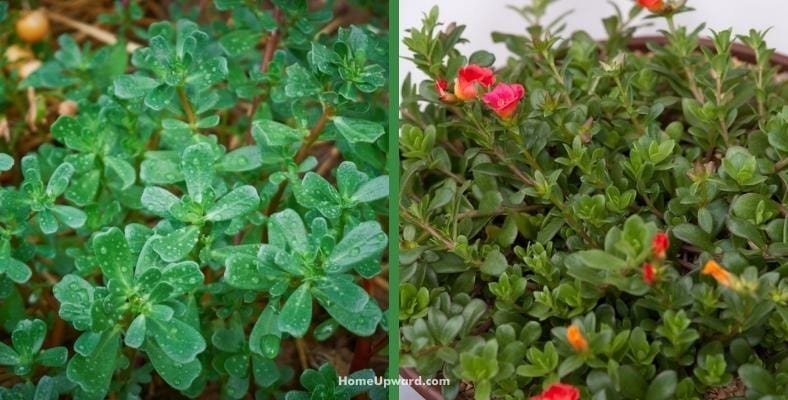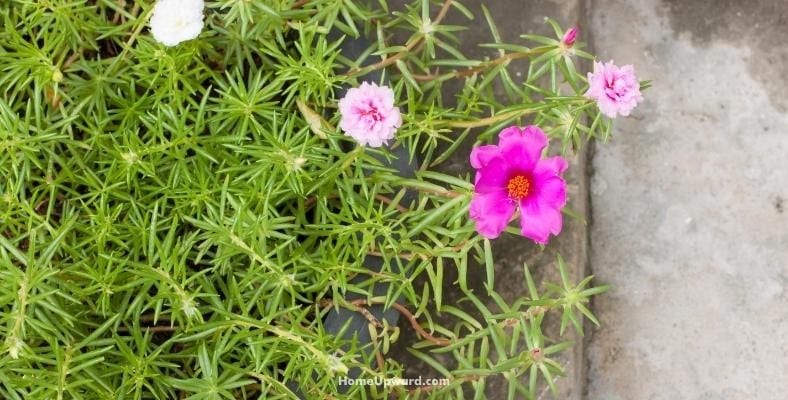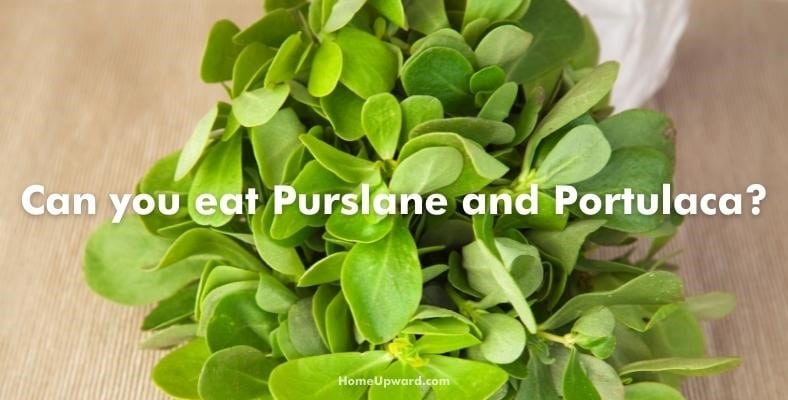Contents
What is the Difference Between Purslane and Portulaca?
To understand the difference between purslane and portulaca, we must first have a quick lesson in plant taxonomy or classification.
The taxonomy list goes like this: kingdom, phylum, class, order, family, genus, and species. After species, the classifications can narrow even further, but we don’t need to drill deeper to help understand purslane and portulaca.
Portulaca is the genus of plants, of which there are many different types of plants. Purslane is one of those plants, a species of the genus portulaca. In other words, portulaca is the mother of purslane, and purslane has many siblings that have similar characteristics.
What is Another Name for Portulaca?
Another name for portulaca is also known as the sun rose or moss rose. These alternate names point to the resiliency of this plant, which is a succulent. Portulaca plants can grow in various conditions and will easily spread as ground cover.
Portulaca is called the sun rose because it thrives in a full sun environment, growing showy flower buds. This plant is also called the moss rose because the fast-spreading greenery becomes a dense maze of stems. This forms a mossy mat on the soil.
How Do You Keep Purslane Blooming?
One way to keep purslane blooming is to deadhead the plant. This hardy plant can grow in many conditions, like the cracks in a sidewalk or within loose gravel. To maintain blooms, simply pinch off dead flowers to promote new blossoms.
This plant grows quickly and can easily switch from a common North American ornamental plant to a situation that requires weed control. Consider the surrounding plants and other elements in your gardens before planting this succulent, which can overwhelm its boundaries easily.
How Often Do You Water the Portulaca Plant?
The portulaca plant is a succulent, and therefore does not need much water. Portulaca varieties are planted intentionally for their drought-resistance and low maintenance characteristics.
This plant is often wild in places like airport runways or along roadsides. You can also grow portulaca as a container plant or as a very rapidly-spreading ground cover.
If you are experiencing a period of prolonged drought, you can water portulaca very lightly every one to two weeks. Water only at the root level with a soaking hose or drip irrigation to maintain the delicate flower buds on the end of the stems.
Portulaca varieties also have flat, oval-shaped leaves that capture water very well. This allows the plant to go longer between waterings due to this water-conserving shape.
Growing the purslane leaves to eat is essential to keep them much more watered than the portulaca used for landscaping. Leaves that were stressed for moisture don’t taste as good as well-hydrated leaves.
Can You Eat Purslane and Portulaca?
One of the main differences between purslane and portulaca is when it comes to eating these plants. The type of portulaca that is eaten is the weed purslane, also known as portulaca oleracea.
Purslane is commonly sold at farmer’s markets and boutique grocery stores as a fresh or cooked vegetable. The leaves, stems, flowers, and purslane seeds are all edible, making this plant a very efficient crop in many places worldwide. It has a slightly tart, sour, salty taste.
In France, purslane is known as pourpier, and it is used commonly in purslane salad and soups. This vegetable is also widely used in Mexican recipes and is known as verdolaga. Some Mexican recipes use cooked purslane as a healthy and delicious side dish.
What Are the Benefits of Eating Purslane?
Purslane is very high in various vitamins and omega-3 fatty acids. Purslane is also readily available and often dismissed as a weed, so if you’re willing to forage, purslane is there for the picking! This plant’s distinctive flavor provides a new taste for your salads and soups.
Who Should Not Eat Purslane?
Despite all of its benefits, there are still a few groups of people who should not eat a purslane leaf. It is not recommended for children under two to eat this vegetable to avoid lung issues. If you develop kidney or urinary tract stones, you should not eat the purslane plant.
What is Portulaca Good For? Health and Medicinal Benefits
This plant is considered very healthy for most people because of the very high levels of vitamins and other essential nutrients. The common purslane variety is high in omega-3 fatty acids, Vitamin A, calcium, magnesium, antioxidants, and oxalates, like in spinach.






